An amazing legacy of Jesuit missionaries in Paraguay (29 photos)
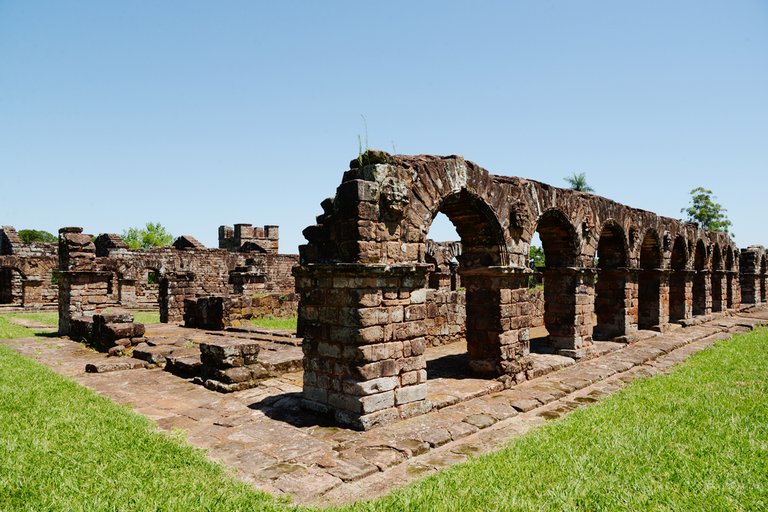

This was a full day tour, booked with an agency called Tierra Colorada. We were picked up at our hotel. The driver only spoke Spanish, so we did wonder how he was going to give us a guided tour! He was very helpful when we crossed the border in Posadas and through the passport control. First stop was Misión Jesuítica de la Santisma Trinidad.
The remains of these missions can be found not only in Argentina, but Brazil and Paraguay as well. All together the Jesuits built about 30 missions. From Argentina we did a day trip to the Jesuit ruins in Paraguay: Trinidad and Jesús de Tavarangue. Both are among the best-preserved Jesuit ruins on the South American continent. Because they are located some 12 kilometers from each other, it’s easy to include a visit to both on the same day. Both were added to UNESCO’s Heritage list in 1993.
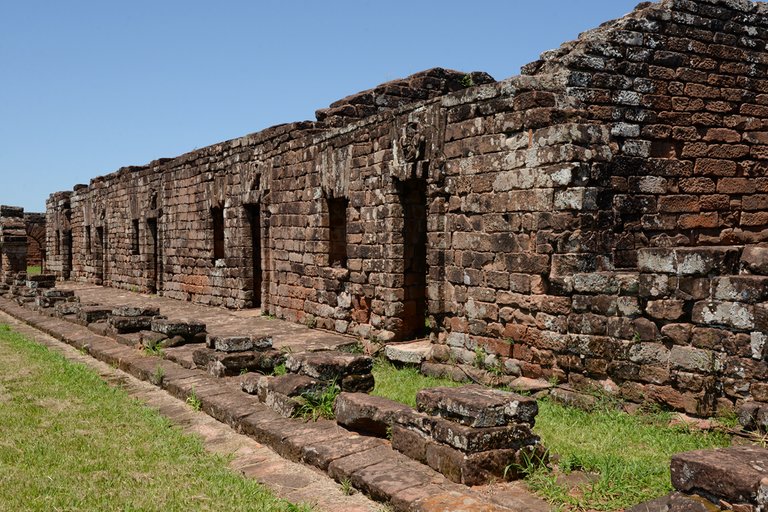
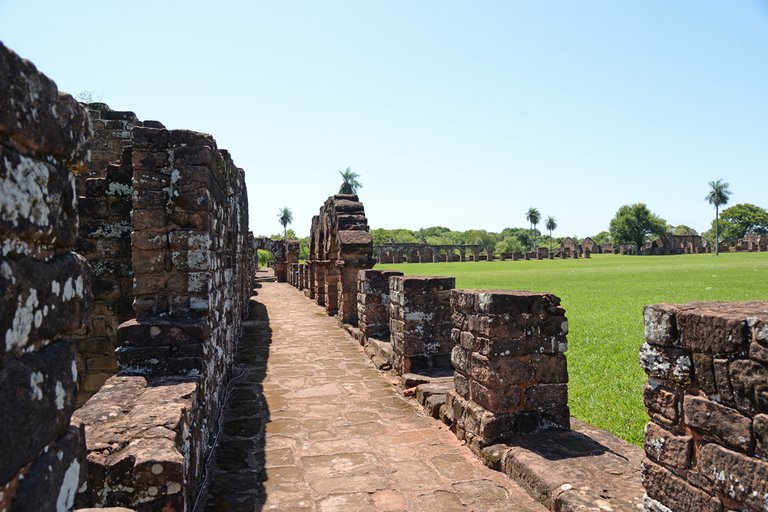 The homes of the Guaraní families
The homes of the Guaraní familiesTHE RUINS OF TRINIDAD
It turned out that our driver / guide should not be walking around among the ruins together with us. I had to download an app and then scan a QR code at each place. The same information was read by a voice in English. This functioned very well. We started at the Plaza, but instead of walking straight to the church, we started to the left with the houses that once were the home of the Guarani families and ended up at the church.
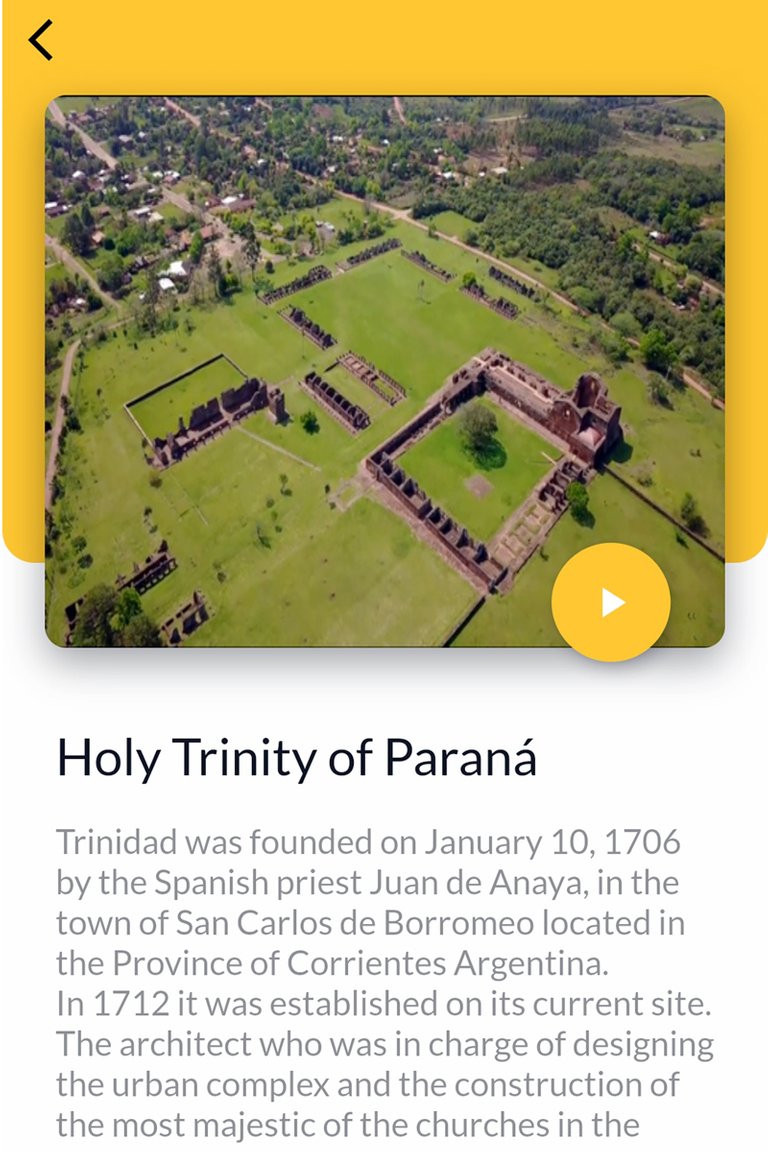 The “guide” as it looked like on my phone (I took a screenshot here)
The “guide” as it looked like on my phone (I took a screenshot here)As you can see on the photo, this place is huge. The largest square complex to the right includes the church. Even though it is ruined, it is huge and very impressive. Trinidad was established in 1706 and range as not only the largest, but also one the best preserved in this area. The area with the family houses shows that each house has a length of 20 meters, separated by a street from the next house.
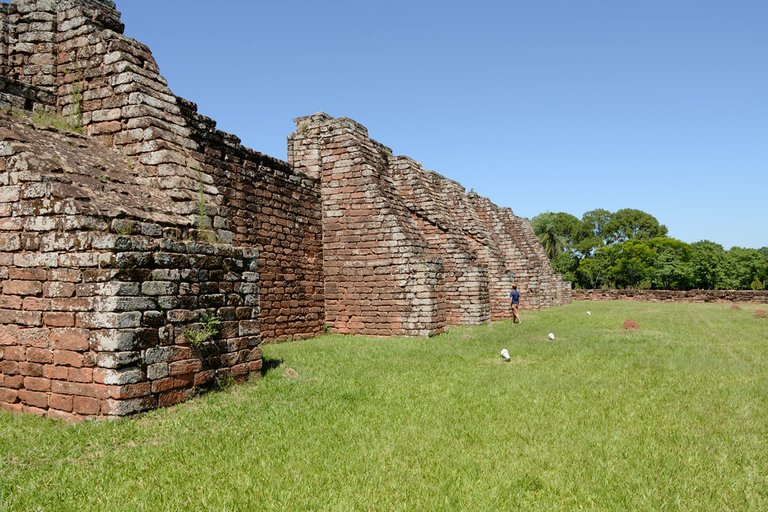
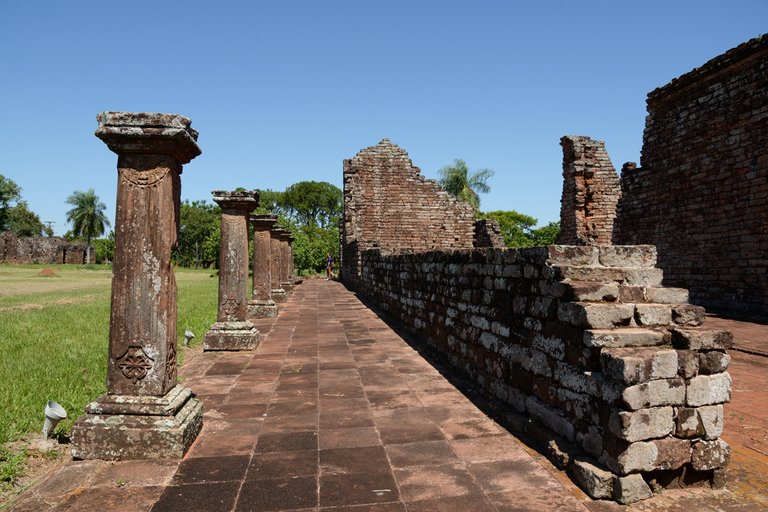

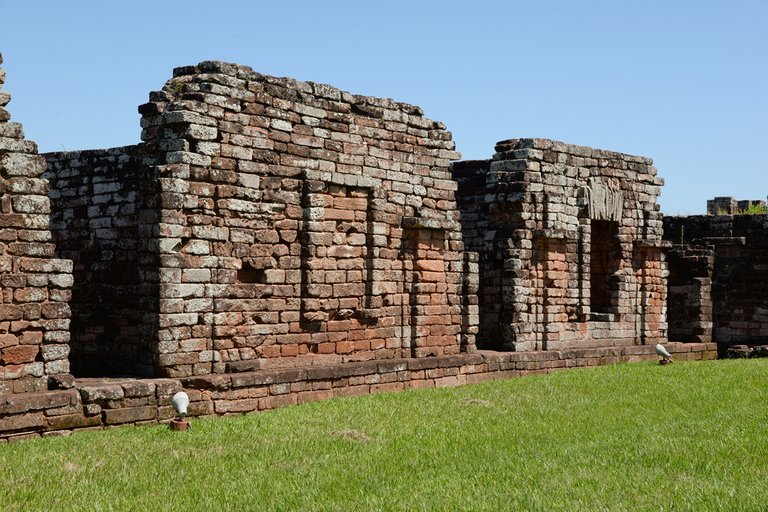 Workshops
WorkshopsThe workshops were the place where all kind of things were produced. Musical instruments, sculptures, leather, stonework, ceramic utensils etc. It was also here that food was stored. They produced their own agriculture products.
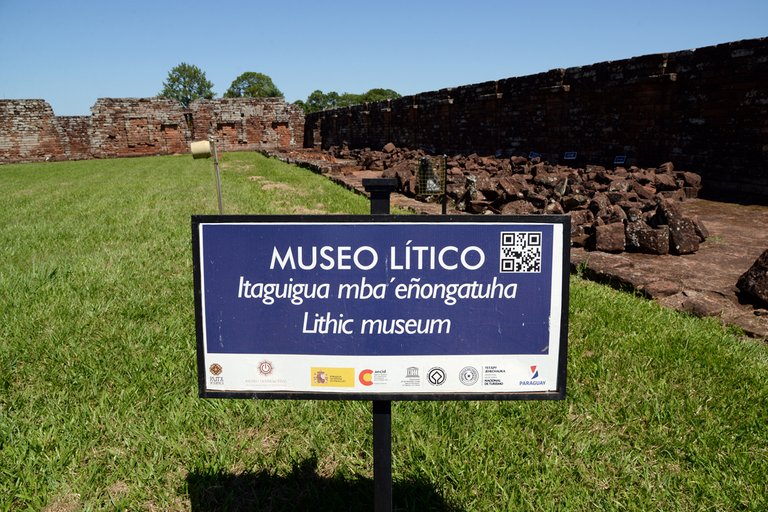
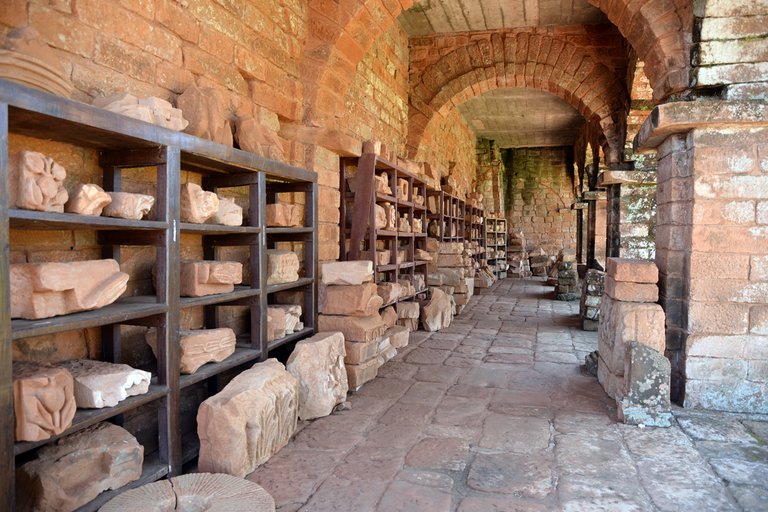
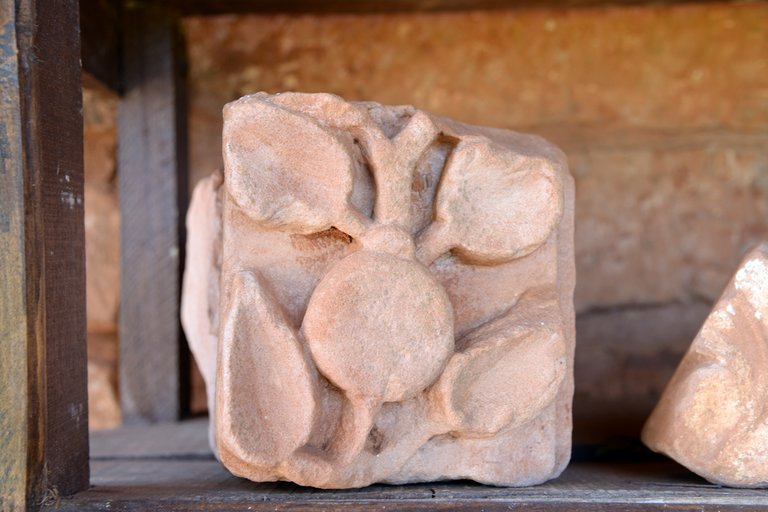
In parts of the ruined workshops, this little museum has an exhibition with artefacts from some of the carved stonework that once decorated some of the buildings.
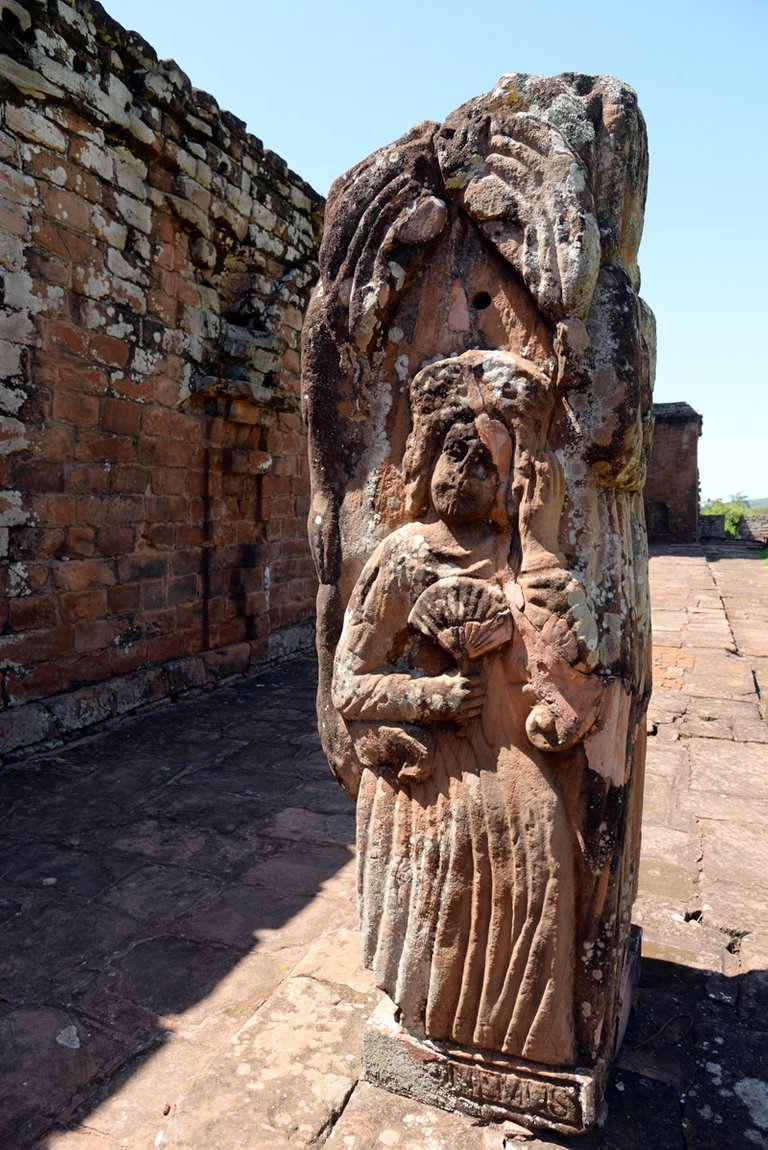
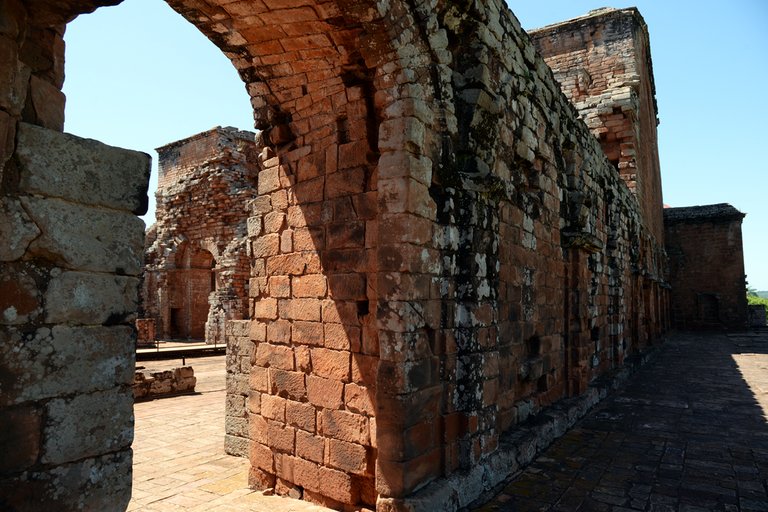
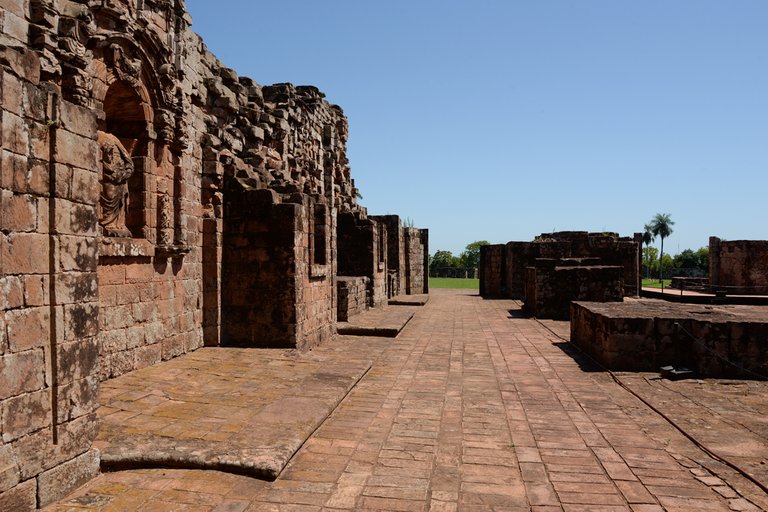 The Greater Church
The Greater Church
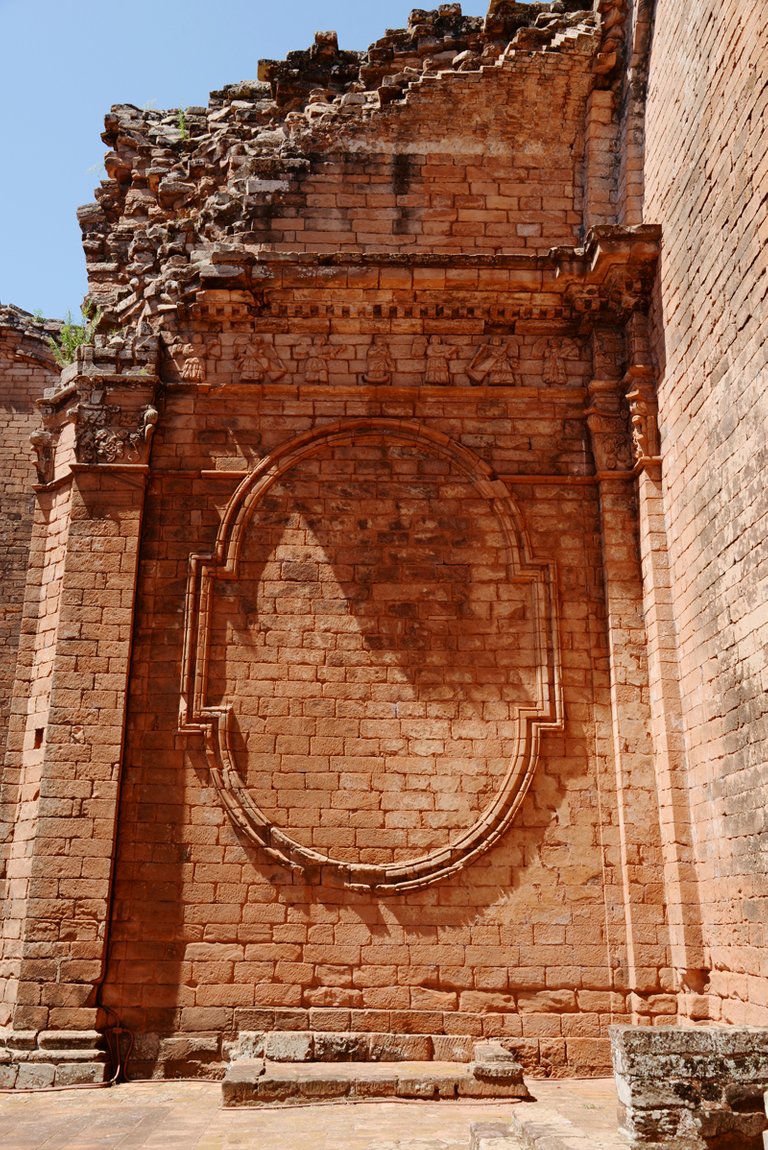
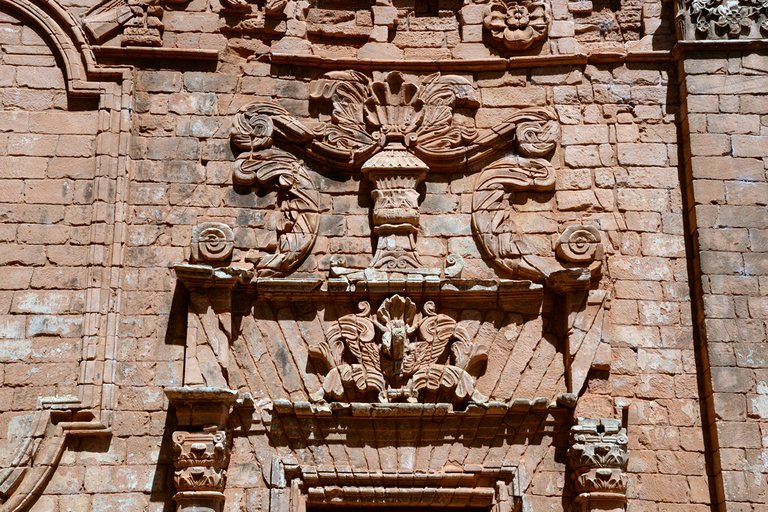
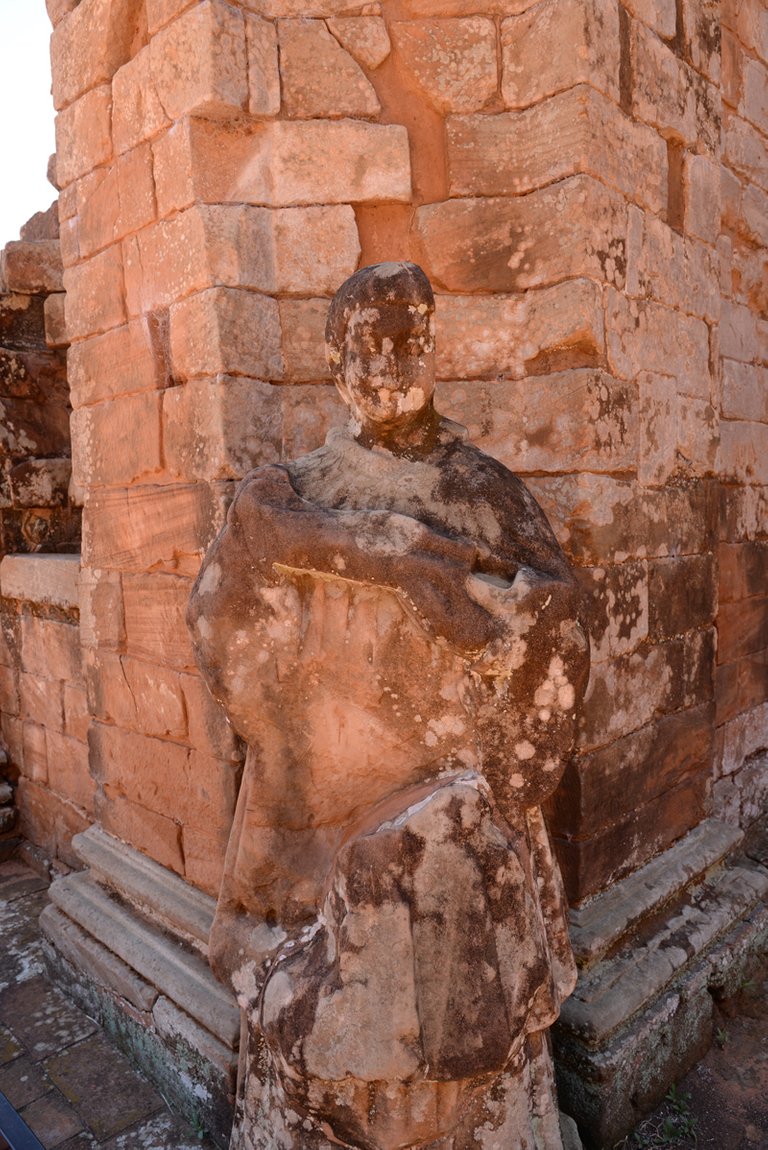
The absolute largest structure in this whole place. In each of the missions, this was the case. An amazing structure. At the entrance and towards the nave, we can see the remains of columns. There are still lots of preserved decorations. Niches with sculptures. Doorways that are beautifully carved. It was here in the church we spend most of our time. Because we entered through a doorway on the right side we walked to the entrance from the inside.
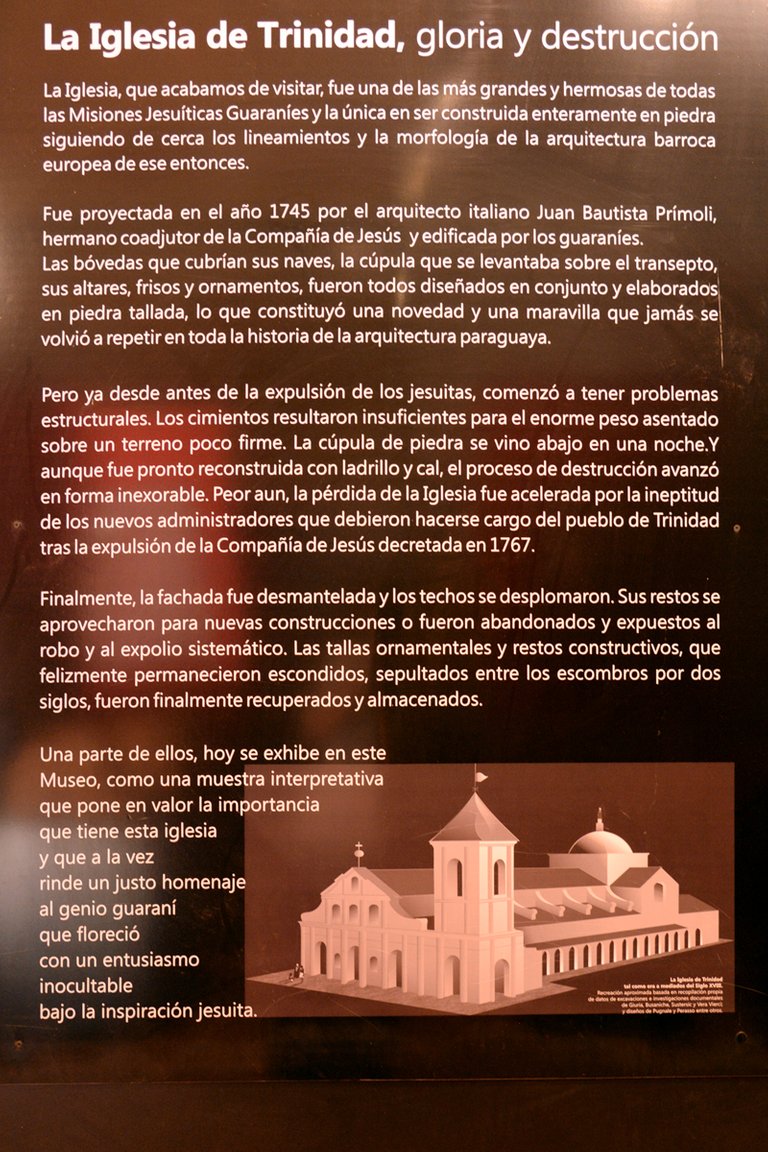
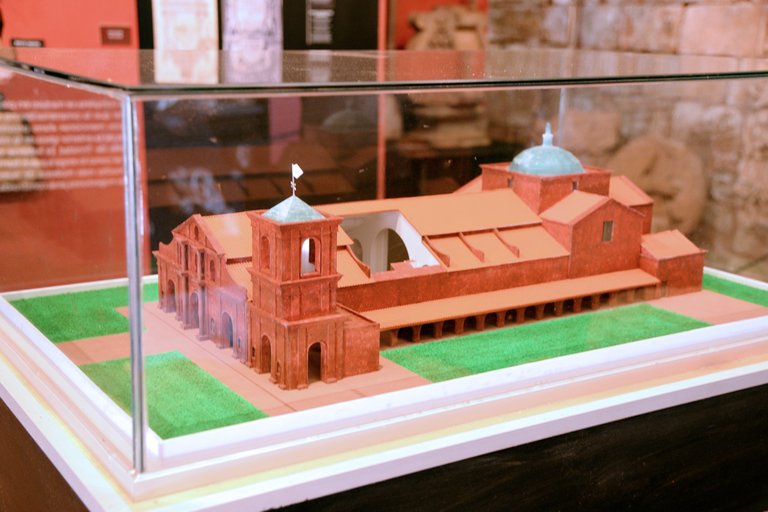
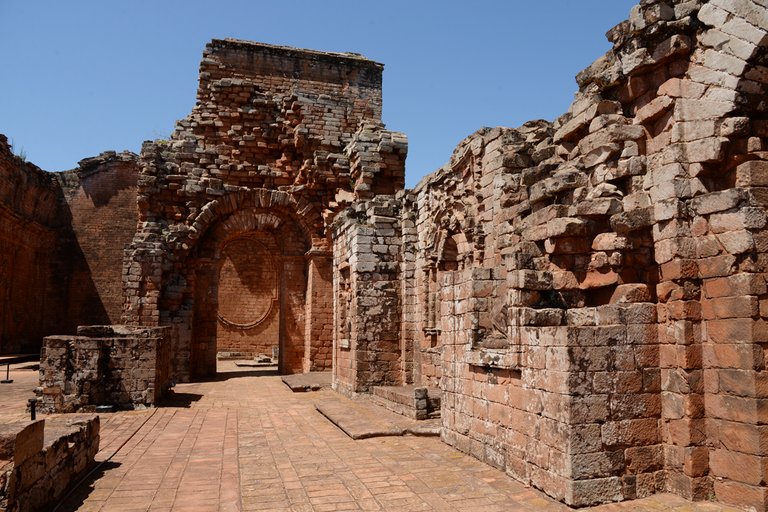
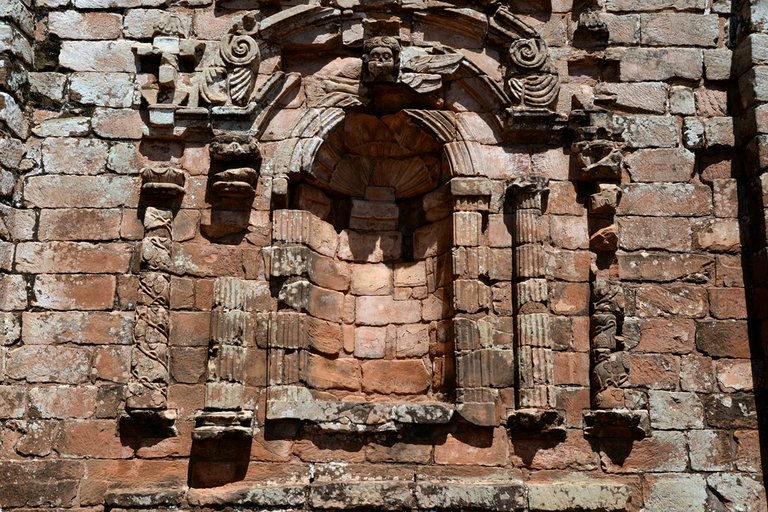
From the inside we enter a small museum. Today this former sacristy makes up the small museum that contains a model of the church, information boards and fragments of what is left of decorations from buildings and ceramic utensils.
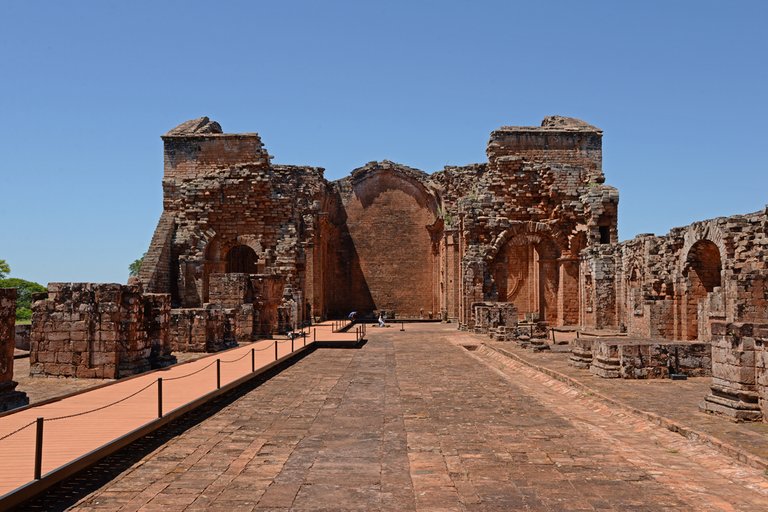
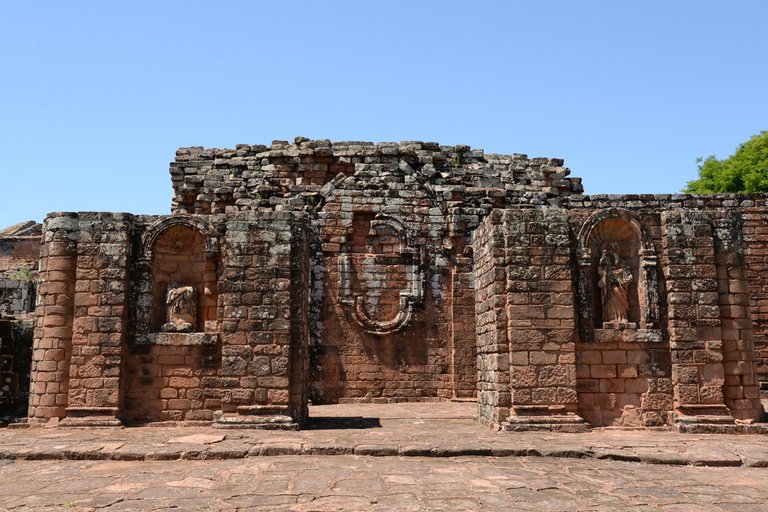
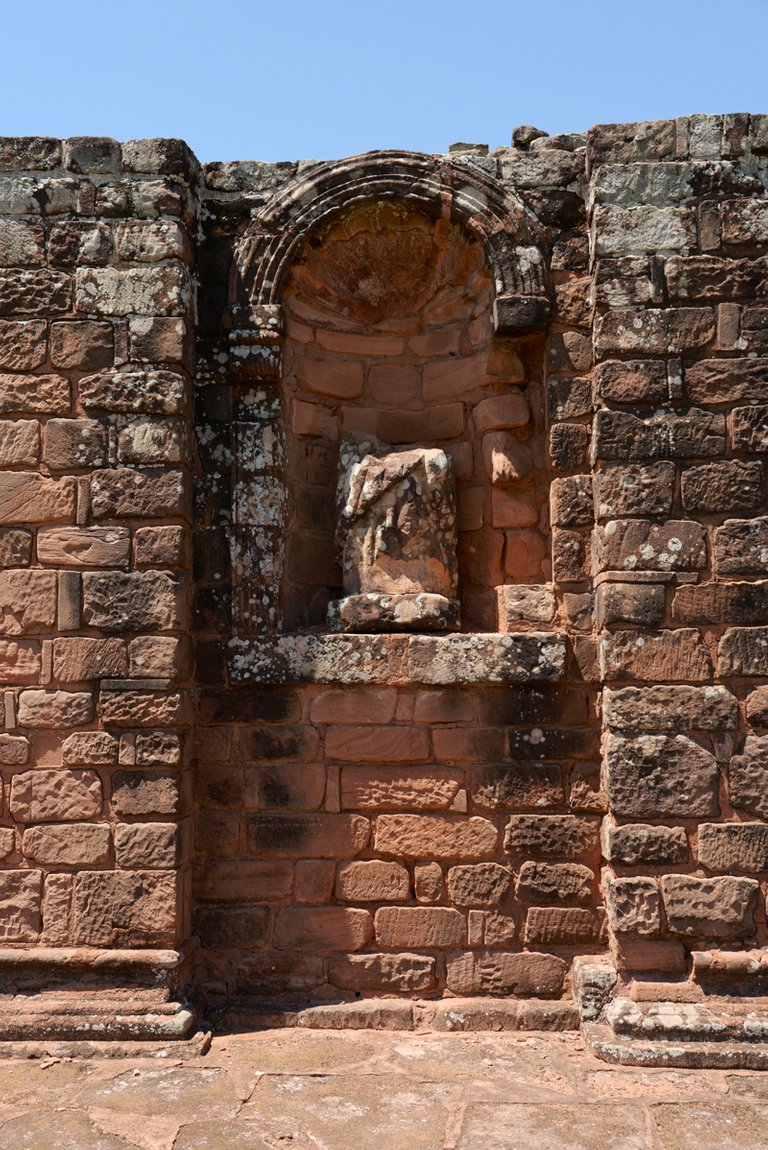
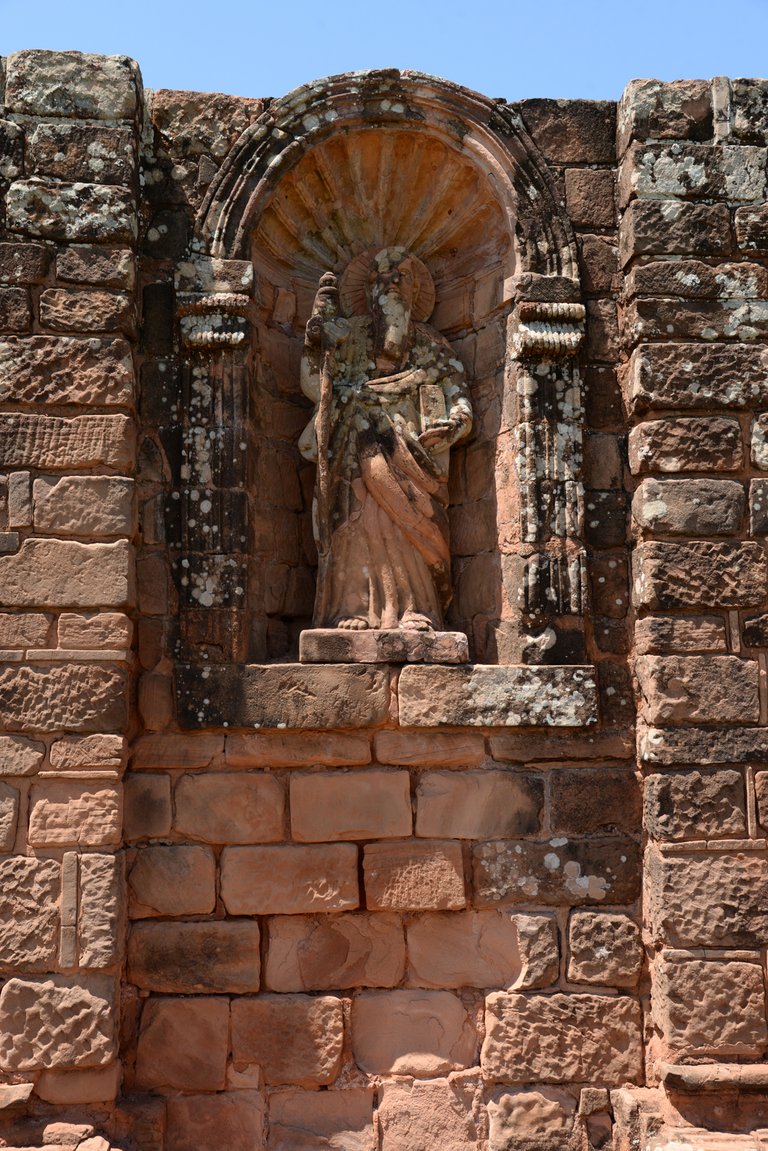
We leave the church by walking down to the entrance, but took time to look at the walls outside with niches and sculptures.
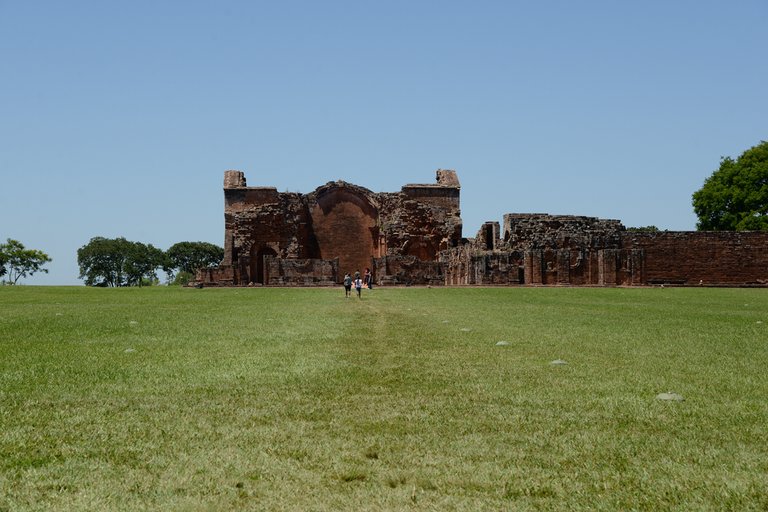
The Plaza with the church in the background. This central square was where the inhabitants could have ceremonies, weddings or other kind of meetings.
WHO WERE THE JESUITS?
The order of the Jesuits was founded in 1540 by a Spanish priest. Some members of the congregation left Spain for South America about a hundred years later. This was when they started to convert the Guarani population. The Jesuits valued education. Besides teaching Christianity, they focused on teaching skills like handicrafts and agriculture. Instead of using force or other methods to oppress the Guarani people, the Jesuits were offering development to the natives. They taught them the skills of a modern society (at that time) which was far better than what the Spanish conquistadors could do.
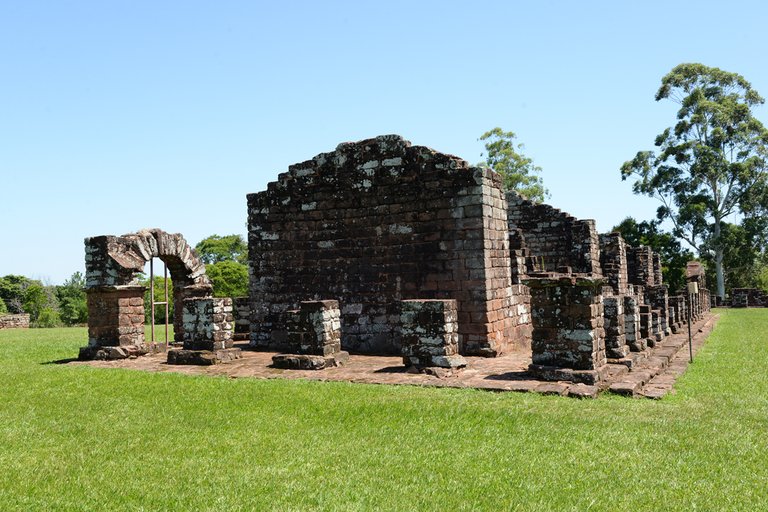
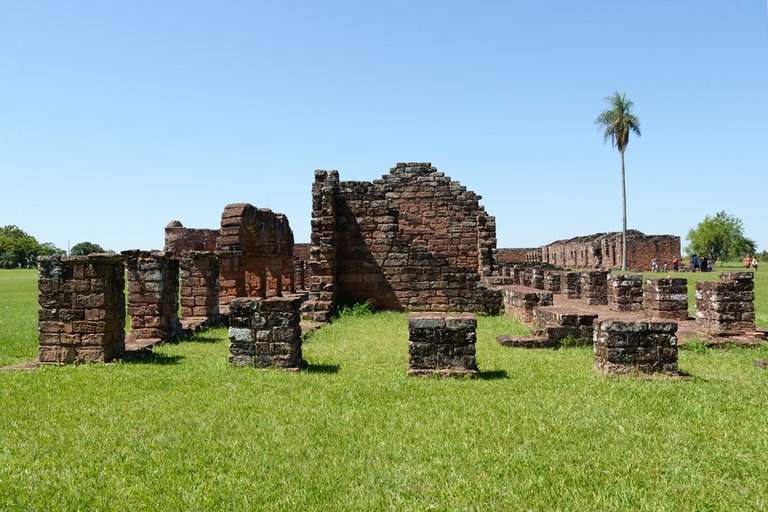
Impressive what the Jesuits managed to achieve. Well worth a visit.
Sources:
Information from the «guided» tour and the small museum
Please do follow if you want to keep up with my next travel story. Any upvotes or reblogs are hugely appreciated!
Latest travel story, check out:
A good place for nature lovers – Esteros del Iberá National Park, Argentina
U.J
Kristiansand, Norway
All the photoes are mine, Ulla Jensen (flickr, Instagram and facebook)
[//]:# (!pinmapple -27.13015 lat -55.70188 long An amazing legacy of Jesuit missionaries in Paraguay d3scr)Follow us for our street art contest and blogs about travel, art, photo, crypto & gaming

Congratulations, your post has been added to Pinmapple! 🎉🥳🍍
Did you know you have your own profile map?
And every post has their own map too!
Want to have your post on the map too?
Congratulations @digi-me! You have completed the following achievement on the Hive blockchain And have been rewarded with New badge(s)
Your next target is to reach 270000 upvotes.
You can view your badges on your board and compare yourself to others in the Ranking
If you no longer want to receive notifications, reply to this comment with the word
STOPCheck out our last posts:
weee thanks 😃👍
You're welcome @digi-me! Have a nice day 😊👍
Nice tour. I love the pictures
!HUG
I sent 1.0 HUG on behalf of @chacald.dcymt.
(3/3)
Thank you @chacald.dcymt 😊
Thanks a lot. A great experience 🙂
Thanks for show us ! Nice
🙂👍
Yay! 🤗
Your content has been boosted with Ecency Points, by @digi-me.
Use Ecency daily to boost your growth on platform!
Support Ecency
Vote for new Proposal
Delegate HP and earn more
Thanks a lot :)
Amazing pictures
Thank you🙂
Thank you for showing us this piece of history!
My pleasure🙂
@tipu curate
Upvoted 👌 (Mana: 46/66) Liquid rewards.
Thanks a lot! :))
What a historic place. Our country was actually colonized by Spanish led by Ferdinand Magellan, who is actually Portuguese.
I didn't know that your country was cookies by the Spanish as well! Historic places, I think, are interesting because of how history has affected the present.
Congratulations, your post has been upvoted by @dsc-r2cornell, which is the curating account for @R2cornell's Discord Community.
Thank you so much🙂
Thanks a lot! @jasonmunapasee 👍😊
You're welcome.
Have a great weekend. 😊
Yeah, have a nice weekend too.